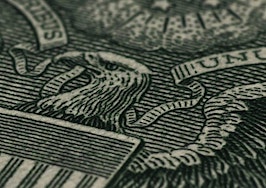- Chaotic global markets have been caused by events overseas, and there is no sign of domestic recession in any indicators except those which rely on stocks.
- Panic out there pushes global money to U.S. bonds and even MBS for safety and to find some yield.
- What might rescue the outside world? And if no rescue, at what point might outer waves of gravity hurt us?
Markets have found a patch of stability today, the U.S. 10-year Treasury trading at 1.72 percent, which has pulled 30-fixed no-point mortgages down into a range near 3.625 percent. At these levels, only about 0.25 percent above the all-time lows at the end of 2012.
Most important for peace of mind: these chaotic global markets have been caused by events overseas, and there is no sign of domestic recession in any indicators except those which rely on stocks. Early forecasts have Q1 GDP (gross domestic product) rebounding to 2.5 percent annual growth. And we have been here before: the ’97-’98 “Asian Contagion” was a similar affair, which ultimately helped the U.S. economy.
So what in hell is this all about, the S&P 500 dumping from 2100 to 1850 in 60 days, U.S. long-term rates in the face of Fed rate hikes dropping to mid-crisis lows, so low then only in anticipation of quantitative easing (QE)? Here at home, it’s easy to explain. Better than 60 percent of S&P 500 earnings came from overseas, now worth less because of a strong dollar, and at risk altogether because of sinking overseas economies. Panic out there pushes global money to U.S. bonds and even MBS for safety and to find some yield.
An elegant experiment paid off this week, picking up the gravity waves from the merger of two black holes, together the size of several dozens of our suns. The collision happened about a billion years ago, but the waves have just now arrived on our shores. Stories in the popular media note a “discovery.” Nonsense. Young Einstein had the math right 100 years ago; all we’ve done is to develop a technology to detect what he already knew.
Economic events overseas have a similar feel. There is no surprise, just verification. The world has five economic blocks: the U.S., Europe, Japan, China and the “emerging” group. The U.S. is by far the most elastic, if unguided, and the Fed’s ministrations worked beautifully here, QE included. In addition to pushing the cost of money to zero, it bought about 12 percent of Treasurys outstanding, and 17 percent of U.S. mortgages. No, we don’t have milk and honey flowing from faucets, but markets stabilized and we began to grow, a feat which has eluded the rest of the world. And U.S. growth durable and fast enough that if we were our own planet, the Fed would have to raise the cost of money.
The first question: how long might external distress last, push down on U.S. rates and intercept Fed intentions to tighten? The answer is an unpleasant counter-question: what might rescue the outside world? Ahem. If anything?
And if no rescue, at what point might outer waves of gravity hurt us?
Japan is cracking wide open. The Nikkei was 21,000 in September, 17,000 one week ago, now 15,000. Two weeks ago, the Bank of Japan (BOJ) pushed itself into the last ditch, going to negative rates (charging banks to hold their cash, wrecking them), and the first result was positive, the yen sliding to 122/$.
One week later it has rocketed up to 113/$, not as a safe-haven, but investors dumping yen assets and reversing yen hedges. A strong yen again crumps Japan’s exports. The BOJ will soon own 40 percent of Japan’s debt. There are no other buyers. Japan’s 10-year earlier in the week traded below zero, the first major-economy long-bond ever. Japan has no way out but default and to start over.
Europe is still bolted to the euro, frozen while waiting for the gravity wave to crush the euro experiment, or its economy, whichever first. German 10s are 0.263 percent, Italy’s 1.637 percent, and Portugal’s are crossing the Grecian black hole horizon, above 4.00 percent.
China and the emergings are in their own two-body dance. China isn’t buying, so the emergings aren’t selling and hence can’t buy, but China continues to bury them and all of us in its over-production.
The global Dow was 2640 last summer, 2550 at the New Year, 2050 now. Banks are the circulatory system for the global economy, and we are learning anew that there is no way to protect necessarily leveraged institutions in a panic except by guarantee by entire societies. Too big to fail or if too many … just facts of financial space/time.
The 2008 signal of runaway gravity: yields on sovereign bonds falling, while yields on weaker issues stay the same or rise. Over there — not here! — and here we go again.
US 10-year T-note in the last 90 days. I wish there were a way to sugar-coat the message. It is, of course, good news for housing, but the cause is tough.

The Fed-predictive 2-year T-note in the last year. These traders never did take seriously the Fed’s absurd threats, and now say the Fed will stay put open-ended.

The excellent survey of small business is tailing from a six-year rise, but hardly a sign of trouble.

The Atlanta Fed GDP Tracker has been eerily accurate, no trouble at all now.

The New York Fed’s quarterly rundown on consumer debt shows there is no bubble to blow. Uniquely here in the U.S. since the Great Recession, we wrote off nearly all bad debt and have suppressed new growth. In fact, the only debt growth since the Great Recession has been in autos and student loans, both near saturation.

Good-credit yields falling out from under poor-credit ones …

Wallpaper in Japan. No way out except some modified form of default wiping out a large fraction of Japanese savings and of course its financial institutions. As closed as Japan is, that event would ripple space-time:
All banks are in the business of both lending long after borrowing short from depositors, and “liquidity transformation,” investing in illiquid assets with depositors’ liquid cash. In an world with no yield except on weak assets, no bank can make money. And the screwballs who think central banks should tighten to create yield are just that: nuts.
Normally an inverted yield curve would be another global warning (short rates rising above long), but as all rates approach zero, the curve cannot invert.

The Japan poster-child, the spread between short and long rates approaching black-hole zero.
Lou Barnes is a mortgage broker based in Boulder, Colorado. He can be reached at lbarnes@pmglending.com.









